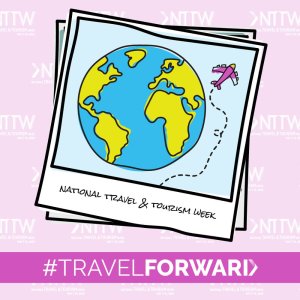Tourism and Economic Development: Constructive Collaboration
June 21, 2023
City Nation Place, held this year in New Orleans, is a two-day conference that brings together leaders from tourism and economic development to forge and foster more productive working relationships between the two groups.
The rationale: Now more than ever (and really for the first time), there’s an appreciation for the important symbiosis between the respective worlds. There’s a recognition that understanding and alignment are essential to collaborate on solutions around such critical issues such as talent attraction/retention, infrastructure/product development, and the interdependence between the tourism and resident economies.
It’s sort of shocking that it’s taken this long. Consider the things shared by both groups: destination assets such as great restaurants or access to the outdoors appeal to visitors, residents, and businesses seeking an office location to attract and retain workers alike. They also share destination attributes, such as values, beliefs, and perceptions, creating an environment ripe for collaboration.
Disappointingly, in most cases however, the two share no common brand—either visually or in the stories they tell. This lack of cohesion means their marketing efforts are more diffuse than collective, and that whatever limited dollars they have are, in large part, less effective than they might otherwise be.
And yet, sitting in the conference, I was struck by the strong desire by attendees to do more to connect the two worlds, to find and share common ground, and to work towards a singular and more cohesive destination brand for their respective communities.
To be clear, there definitely were destinations taking this seriously – folks from Elkhart, Indiana brought a contingent of 20 people to the conference, including two mayors and a state representative along with people from both their tourism and economic development teams. Cleveland wasn’t too far behind, with 10 people spanning a range of roles. And several cities, including Anaheim, Minneapolis, and others, brought representatives from both groups to share their own stories and learn what others were doing.
But for the most part, attendees were solo destination representatives from one discipline or the other, who hoped to gain enough knowledge and perspective to bring back and foment greater awareness of the opportunity.
Square Peg in a Round Hole
Funnily enough it all kind of reminded me of a scene from the movie Apollo 13. Maybe you’ll remember the scene I’m referring to:
It’s often referred to as the “Square Peg in the Round Hole” scene – when the astronauts in space begin losing oxygen due to a faulty filter, and the team in Houston discovers that the oxygen filters designed for one capsule don’t fit in the other capsule. As a result, the lives of the three men are at serious risk.
In an attempt to prevent the catastrophe, the ground crew gathers up all the various materials and components that exist in both capsules, dump it all on a table at Space Center, and are told, “We’ve gotta find a way to make this fit into the hole for this using nothing but that.”
For too long, tourism and economic development have thought of themselves as being fundamentally different entities that don’t necessarily or automatically “fit” together.
And while there certainly are some significant differences, if this conference taught its attendees one thing, it’s that remembering that both groups share the same assets and attributes of the destination will allow them to more easily imagine how their combined efforts will achieve greater goals. Fitting the proverbial square pegs into the equally proverbial round holes.
And that’s kind of exactly what we recently did with our clients at Visit Tampa Bay.
Make It Tampa Bay
Recognizing that Tampa Bay’s economic development team was presenting a somewhat different story and a very different look/feel to the Tampa Bay brand he and his team had been developing, the CMO of Visit Tampa Bay, Patrick Harrison, stepped in. In order to align their efforts, he led the development of the “Make It Tampa Bay” website and campaign which highlights why Tampa Bay is a great place to live, work, and run a business.
To showcase this, we developed immersive stories that spotlighted entrepreneurs and the destination commerce ecosystem and integrated tools like cost-of-living calculators and job searches into the content.
Aligning with Visit Tampa Bay’s overall brand across channels meant the new creative featured familiar elements, including immersive destination stories that put the reader in the heart of the action, bold colors, and design elements that set Tampa Bay apart from other destinations.
Putting the Pieces Together
While the issues DMOs and EDCs face are certainly less acutely dangerous or disastrous than returning astronauts from space, there is a significant opportunity for future growth and health of their destinations – if they can make their organizations fit together.



